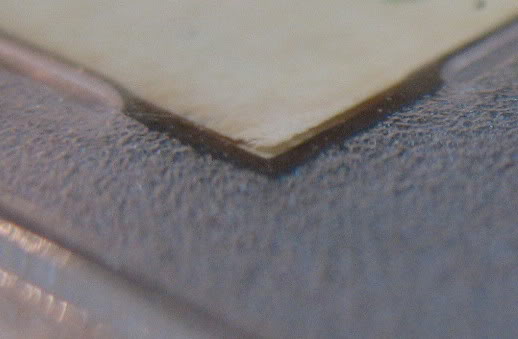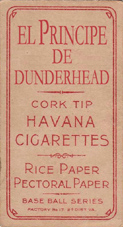How to inspect a card by Kevin Saucier
Page 1 of 1
 How to inspect a card by Kevin Saucier
How to inspect a card by Kevin Saucier
Equipment needed:
To fully inspect a card you will need some basic equipment.
Thankfully, they are relatively inexpensive but an absolute necessity
if you want to identify alterations. At a minimum you will need a
halogen light, a ruler and a jeweler's loupe or some type of
magnification devise.
The halogen light should be "at least" 50 watts in power with
enough room to inspect the card at ten inches if needed. Halogen lights
give off the correct type lighting necessary to see most alterations.
There are several types to choose from like desktop, clamping etc. and
it can be purchased at almost any office supply store, hardware store
and some department stores. Many prefer a simple desktop.
A jeweler's loupe is typically a small handheld magnification
devise that can fold up and slip into a pocket. They come in a variety
of magnification levels but it is recommended that a 10X loupe be used
to inspect a card. Other magnifications such as 5X, 15X , 20X or more
are available. There are also several different types and looks of
loupes that can be purchased to suit an individuals own style. Again,
regardless of what you choose, a 10X loupe is still the most widely
used and recommended.
The ruler is needed to simply measure the card. You will need to
know the "textbook" measurement of the card you are inspecting in order
to know if it is the correct size. Like the other equipment listed
above, rulers also come in a variety of sizes and shapes. It is a
suggestion that both a stiff-type ruler, usually made of wood or hard
plastic, as well as a flexible ruler be used. Each should have a metric
side scaled to the millimeter and the United States standard side that
can measure down to 1/32" of an inch. Normally an ordinary type ruler
is used but there will be times when a card will need to be measured
while it is encapsulated in a graded holder. The flexible ruler will be
needed to contour around the raised plastic areas typically seen on a
3rd party authenticator's holder or slab.
Optional but recommended equipment would be a black light, which is
used to reveal a part of a card that may have been recolored with
paint, markers, pens, etc. or has rebuilt corners and added cardstock.
In some rare instances it can also be used to tell if a card has been
altered with the use of chemicals. These can be purchased at almost all
hardware stores. A completely dark environment using a 25+ watt black
light usually works the best. Try building a black light box or use a
10 gallon acrylic fish tank painted a dark color on all sides except
where the light will be used. Lay the tank on its side with the top
opening in front of you and the light on top. You now have a black
light inspection box.
The Inspection:
There are no specific steps used to inspect a card, it is usually
up to the individual but it would certainly include looking the entire
card front and back, each edge, corners all at various angles,
repeatedly if necessary. To assist in a card inspection the following
steps can be used as a simple guideline:
Measure the card with a ruler both left to right and top to bottom
noting the exact measurements. With the halogen light on, hold the card
about six to eight inches from the light. Try different distances
during the inspection as well. Initially the card should be positioned
in such a way that an edge of the card is facing the light. Carefully
tip the card slightly back and forth so that all angles of the edge can
be inspected. After the first edge is looked at proceed to the next
three, noting any abnormalities or color variances.
Turn the card face up and give a quick look the symmetry of the cut
along the edges, the corners and picture centering and overall surface.
The entire card should be directly under the light, again about six to
eight inches. Angle the card slightly in all directions while moving it
clockwise or counter clockwise if you prefer. Look at the gloss,
potential recoloring spots, possible stains, dents, dings, residue,
surface wrinkles, scuffs, scratches any thing that doesn't look normal
and the overall general condition. Do the same with the back of the
card.
With your 10X jeweler's loupe and under the light carefully inspect
the corners looking at the overall condition and for any abnormalities.
Take the loupe and look closely at any potential problems you may have
noticed during the surface and edge inspections. Also look at the card
with the loupe at various angles.
This should be all that is needed to examine a card for potential
alterations. As mentioned above, you may want to repeat any or all of
the steps outlined until you feel comfortable every part of the card at
every conceivable angle has been scrutinized to the best of your
ability. In time, this process will become faster and easier as you
gain more experience and develop your own routine and detection
methods.
For the black light inspection, make sure you are in a dark
environment. Hold the card a few inches from the light and look at it
from various angles. Look for unusual luminance. Here are some examples
of how some "suspected" altered cards (my opinion) appear under a black
light:


This card has been shown before and has rebuilt corners. The black
light picked up on the adhesive compound used in the added stock. Note
the bright color of the corners.


The card above looked very normal during the in-depth inspection
under a halogen and loupe. When held under a black light the back of
the card showed an unusual color, with a light circular pattern in the
middle surrounded by normal toned edges. It is suspected that this card
was once removed or soaked from a scrapbook and the remaining invisible
adhesive lights up under the black light. These pictures show the
various angles of an inspection.

This card on the right looked unusually white. A detailed
inspection showed no dirt or tone in any part, chip or crevasse of the
card. Vintage cards removed from packs have more tone. This is a key
indicator that it has been bleached or chemically cleaned. A quick look
under a black light showed that the card had more than likely been
bleached. Look at how bright it is next to another card of the same
issue, with the same grade. Yes...it is slabbed!
The black light will only catch abnormalities on a dark cardstock.
It will light up certain starches that are used in adhesive mixtures
specifically designed for paper. It will also show certain markers,
paint and color additives. For gray type paper your halogen light is
the tool to use.
Reprints and phony cards will need to be studied under a halogen
light and a loupe. As you have done in the past, you will be looking at
the individual pixels. Most vintage cards will have pixels that are not
uniform in size, shape or ink dispersion. Nice solid round pixels with
perfect ink spots are usually not a good sign. The pixels should have a
dark external ring fading to a light ink color in the middle or, as I
have see as well, dark centers with ink that fades outward and not
perfectly round. Many times it will look like the ink was dropped
with very faint splattered (is that correct?) edges. This is really
not my area of expertise I just know the basics, which in usually
enough to distinguish the difference.
Like any card, your experience with the issue and feel of the
cardstock is your best option. As an example, I collect Bell Brand
Dodger cards from the early 60's. I once identified the year of 12
different cards from a three year period while
blindfolded....only by touch and the feel of the cardboard and
surfaces. Even pulled one that was not a Bell Brand, thrown in to trick
me. This only proved that I was a bigger card geek than originally
thought.
When inspecting a slabbed card make sure to look very closely at
the corners and edges. Not necessarily for alterations but for damages
caused by the slab itself. Just because a card is in a holder does not
always mean it is better protected.
The picture below shows a "high-grade" card that has been damaged
by the rails that keep it in place. Through time (who knows how long)
the end of the two rails, top and side, have placed pressure on the
corner and caused the card to peel. If you look closely you can see the
tip of the rails have dented each side. What you can't see is the
layers below the top are also separating, as well as another corner.

Typically an entire edge is dinged inward from a slightly loose
card being banged against the rail or gasket. Usually this can only be
seen under magnification. This is another high-grade card. The picture
clearly shows the left edge as being pushed in forming a ridge...in
reality almost the entire edge has been affected. This is very common.

Under a halogen and a 10x loupe inspect some of your cards. You
might be surprised to find out the slab meant to protect your card may
have downgraded the condition. Those "card condoms" (plastic inner
sleeves) that most collectors dislike are not always a bad thing. Most
of the time it adds some extra protection.
Just another thing to look for!
Kevin Saucier
To fully inspect a card you will need some basic equipment.
Thankfully, they are relatively inexpensive but an absolute necessity
if you want to identify alterations. At a minimum you will need a
halogen light, a ruler and a jeweler's loupe or some type of
magnification devise.
The halogen light should be "at least" 50 watts in power with
enough room to inspect the card at ten inches if needed. Halogen lights
give off the correct type lighting necessary to see most alterations.
There are several types to choose from like desktop, clamping etc. and
it can be purchased at almost any office supply store, hardware store
and some department stores. Many prefer a simple desktop.
A jeweler's loupe is typically a small handheld magnification
devise that can fold up and slip into a pocket. They come in a variety
of magnification levels but it is recommended that a 10X loupe be used
to inspect a card. Other magnifications such as 5X, 15X , 20X or more
are available. There are also several different types and looks of
loupes that can be purchased to suit an individuals own style. Again,
regardless of what you choose, a 10X loupe is still the most widely
used and recommended.
The ruler is needed to simply measure the card. You will need to
know the "textbook" measurement of the card you are inspecting in order
to know if it is the correct size. Like the other equipment listed
above, rulers also come in a variety of sizes and shapes. It is a
suggestion that both a stiff-type ruler, usually made of wood or hard
plastic, as well as a flexible ruler be used. Each should have a metric
side scaled to the millimeter and the United States standard side that
can measure down to 1/32" of an inch. Normally an ordinary type ruler
is used but there will be times when a card will need to be measured
while it is encapsulated in a graded holder. The flexible ruler will be
needed to contour around the raised plastic areas typically seen on a
3rd party authenticator's holder or slab.
Optional but recommended equipment would be a black light, which is
used to reveal a part of a card that may have been recolored with
paint, markers, pens, etc. or has rebuilt corners and added cardstock.
In some rare instances it can also be used to tell if a card has been
altered with the use of chemicals. These can be purchased at almost all
hardware stores. A completely dark environment using a 25+ watt black
light usually works the best. Try building a black light box or use a
10 gallon acrylic fish tank painted a dark color on all sides except
where the light will be used. Lay the tank on its side with the top
opening in front of you and the light on top. You now have a black
light inspection box.
The Inspection:
There are no specific steps used to inspect a card, it is usually
up to the individual but it would certainly include looking the entire
card front and back, each edge, corners all at various angles,
repeatedly if necessary. To assist in a card inspection the following
steps can be used as a simple guideline:
Measure the card with a ruler both left to right and top to bottom
noting the exact measurements. With the halogen light on, hold the card
about six to eight inches from the light. Try different distances
during the inspection as well. Initially the card should be positioned
in such a way that an edge of the card is facing the light. Carefully
tip the card slightly back and forth so that all angles of the edge can
be inspected. After the first edge is looked at proceed to the next
three, noting any abnormalities or color variances.
Turn the card face up and give a quick look the symmetry of the cut
along the edges, the corners and picture centering and overall surface.
The entire card should be directly under the light, again about six to
eight inches. Angle the card slightly in all directions while moving it
clockwise or counter clockwise if you prefer. Look at the gloss,
potential recoloring spots, possible stains, dents, dings, residue,
surface wrinkles, scuffs, scratches any thing that doesn't look normal
and the overall general condition. Do the same with the back of the
card.
With your 10X jeweler's loupe and under the light carefully inspect
the corners looking at the overall condition and for any abnormalities.
Take the loupe and look closely at any potential problems you may have
noticed during the surface and edge inspections. Also look at the card
with the loupe at various angles.
This should be all that is needed to examine a card for potential
alterations. As mentioned above, you may want to repeat any or all of
the steps outlined until you feel comfortable every part of the card at
every conceivable angle has been scrutinized to the best of your
ability. In time, this process will become faster and easier as you
gain more experience and develop your own routine and detection
methods.
For the black light inspection, make sure you are in a dark
environment. Hold the card a few inches from the light and look at it
from various angles. Look for unusual luminance. Here are some examples
of how some "suspected" altered cards (my opinion) appear under a black
light:


This card has been shown before and has rebuilt corners. The black
light picked up on the adhesive compound used in the added stock. Note
the bright color of the corners.


The card above looked very normal during the in-depth inspection
under a halogen and loupe. When held under a black light the back of
the card showed an unusual color, with a light circular pattern in the
middle surrounded by normal toned edges. It is suspected that this card
was once removed or soaked from a scrapbook and the remaining invisible
adhesive lights up under the black light. These pictures show the
various angles of an inspection.

This card on the right looked unusually white. A detailed
inspection showed no dirt or tone in any part, chip or crevasse of the
card. Vintage cards removed from packs have more tone. This is a key
indicator that it has been bleached or chemically cleaned. A quick look
under a black light showed that the card had more than likely been
bleached. Look at how bright it is next to another card of the same
issue, with the same grade. Yes...it is slabbed!
The black light will only catch abnormalities on a dark cardstock.
It will light up certain starches that are used in adhesive mixtures
specifically designed for paper. It will also show certain markers,
paint and color additives. For gray type paper your halogen light is
the tool to use.
Reprints and phony cards will need to be studied under a halogen
light and a loupe. As you have done in the past, you will be looking at
the individual pixels. Most vintage cards will have pixels that are not
uniform in size, shape or ink dispersion. Nice solid round pixels with
perfect ink spots are usually not a good sign. The pixels should have a
dark external ring fading to a light ink color in the middle or, as I
have see as well, dark centers with ink that fades outward and not
perfectly round. Many times it will look like the ink was dropped
with very faint splattered (is that correct?) edges. This is really
not my area of expertise I just know the basics, which in usually
enough to distinguish the difference.
Like any card, your experience with the issue and feel of the
cardstock is your best option. As an example, I collect Bell Brand
Dodger cards from the early 60's. I once identified the year of 12
different cards from a three year period while
blindfolded....only by touch and the feel of the cardboard and
surfaces. Even pulled one that was not a Bell Brand, thrown in to trick
me. This only proved that I was a bigger card geek than originally
thought.
When inspecting a slabbed card make sure to look very closely at
the corners and edges. Not necessarily for alterations but for damages
caused by the slab itself. Just because a card is in a holder does not
always mean it is better protected.
The picture below shows a "high-grade" card that has been damaged
by the rails that keep it in place. Through time (who knows how long)
the end of the two rails, top and side, have placed pressure on the
corner and caused the card to peel. If you look closely you can see the
tip of the rails have dented each side. What you can't see is the
layers below the top are also separating, as well as another corner.

Typically an entire edge is dinged inward from a slightly loose
card being banged against the rail or gasket. Usually this can only be
seen under magnification. This is another high-grade card. The picture
clearly shows the left edge as being pushed in forming a ridge...in
reality almost the entire edge has been affected. This is very common.

Under a halogen and a 10x loupe inspect some of your cards. You
might be surprised to find out the slab meant to protect your card may
have downgraded the condition. Those "card condoms" (plastic inner
sleeves) that most collectors dislike are not always a bad thing. Most
of the time it adds some extra protection.
Just another thing to look for!
Kevin Saucier
Page 1 of 1
Permissions in this forum:
You cannot reply to topics in this forum|
|
|






